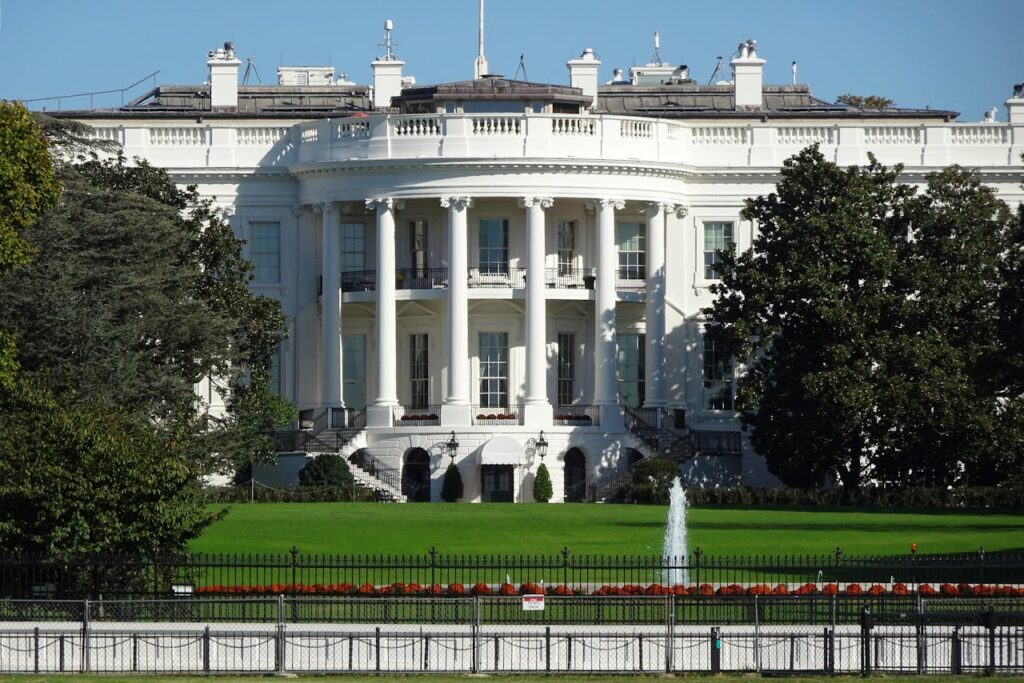The 25th Amendment: A Crucial Safety Measure for Continuity of the Presidency
Ratified in 1967, the 25th Amendment to the United States Constitution was specifically designed to deal with concerns regarding presidential succession and incapacity. This amendment ensures a well thought out, detailed process for the smooth transfer of power within the executive branch in times of crisis. I am certainly no expert on the subject. In fact, recent developments in our current events have brought a number of questions to mind, which prompted me to do a bit of research. Although certainly not an authoritative explanation, this article will hopefully provide a better understanding of the 25th Amendment, its historical perspective, its provisions, and the impact it plays with regard to American governance.
Historical Perspective
The requirement for the 25th Amendment became apparent due to uncertainties in the original Constitution with regard to presidential succession –particularly during times of incapacity. Article II, Section 1, Clause 6 of the Constitution provided that in the event of the president’s removal, death, resignation, or inability to discharge the powers and duties of the office, the vice president would then assume the presidential powers and duties. It did not, however, lay out the actual process for determining the president’s inability, nor did it specifically address whether the vice president would become the president or merely act as president.
A number of events throughout history highlighted these ambiguities. Following the death of President William Henry Harrison in 1841, rather than merely acting as president, Vice President John Tyler declared himself the president, thereby setting a precedent in the process without actually resolving the constitutional uncertainty. Years later, during the extended incapacitations of President James Garfield in 1881 and President Woodrow Wilson in 1919, the United States faced significant governance challenges due to the nonexistence of a well-defined means of transferring power for a temporary basis.
When President John F. Kennedy was assassinated in Dallas in 1963, Vice President Lyndon B. Johnson was sworn in as president on Air Force One at Love Field. In the course of just over two hours, Johnson’s sudden ascension to the presidency—and with it the subsequent absence of a vice president— brought to light the risks of an ambiguous succession process. The urgent need to address these issues was underscored. These events caused Congress to act, leading to the composing and ratification of the 25th Amendment.
Provisions Contained Within the 25th Amendment
The 25th Amendment consists of four sections, each of which addresses a particular aspect of presidential succession and incapacity.
Section 1: Presidential Succession
Section 1 of the 25th Amendment makes it clear that in the event of the president’s removal, death, or resignation, the vice president becomes the president. This provision eliminates any ambiguity about whether the vice president is merely acting as president or fully assumes the office. The clear language ensures a smooth and undisputed transfer of power.
Section 2: Vice Presidential Vacancy
Section 2 deals with the issue of a vacancy in the vice presidency. It stipulates that whenever there is a vacancy in the office of the vice president, the president shall then nominate a vice president who shall take office following confirmation by a majority vote of both Houses of Congress.

This provision safeguards against the office of the vice president being left vacant for an extended period, thereby maintaining the stability and continuity of the executive branch.
A noteworthy application of this particular section occurred in 1973, when Vice President Spiro Agnew resigned. Two days later, President Richard Nixon nominated Gerald Ford as Agnew’s replacement, and Ford was confirmed by Congress. The following year, President Nixon resigned amid the Watergate scandal. Ford then became president, and Nelson Rockefeller was subsequently confirmed as vice president.
Section 3: Presidential Declaration of Inability
Section 3 provides a way for the president to voluntarily declare his or her inability to fulfill the powers and duties of the office. In such a case, the president must provide a written declaration to the president pro tempore of the Senate and the speaker of the House of Representatives. Upon doing so, the vice president immediately assumes the role of acting president. The president can later resume the duties of the office by transmitting a written declaration stating that no inability exists.
This provision has been used a number of times when presidents have undergone medical procedures which required anesthesia. President Ronald Reagan, for example, invoked Section 3 in 1985 when he underwent surgery, temporarily transferring power to Vice President George H. W. Bush.
Section 4: Declaration by Vice President and Principal Officers
Section 4 is the most complex and potentially arguable part of the 25th Amendment. It allows the vice president and a majority of the principal officers of the executive departments (or another body designated by Congress) to declare the president unable to discharge the powers and duties of the office. In such a case, the vice president immediately assumes the role of acting president.
If the president disputes this declaration, he or she can transmit a written declaration to the president pro tempore of the Senate and the speaker of the House stating that no inability exists. The vice president and the principal officers then have four days to respond. If they reaffirm their declaration, Congress must decide the issue. A two-thirds vote in both Houses is required to determine that the president is unable to discharge the powers and duties of the office; otherwise, the president resumes the duties.
Section 4 has never been invoked, but its existence serves as an important safeguard for situations where the president may be incapacitated but unable or unwilling to recognize the incapacity.
Confusion Following an Attempted Assassination
On March 30, 1981, President Ronald Reagan was shot
and seriously wounded by a bullet that ricocheted off the side of the presidential limousine and hit him in the left underarm, breaking a rib, puncturing a lung, and causing serious internal bleeding.
The president was close to death upon arrival at George Washington University Hospital but was stabilized in the emergency room before going into emergency surgery.
Fortunately, the president recovered sufficiently enough to be released from the hospital on April 11.
Surprisingly, during those twelve days there was no formal application of sections 3 or 4 of the 25th amendment, although there was some confusion when Secretary of State alexander Haig announced that he was “in control here” at the White House until Vice President George H. W. Bush, who was in Fort Worth, Texas at the time, returned to Washington.
In fact, Haig was actually fourth in the line of succession after Bush, Speaker of the House Tip O’Neill, and president pro tempore of the Senate Strom Thurmond.
Impact and Significance
The 25th Amendment has had a profound impact on American governance in that it provides a clear and structured process for presidential succession and addresses the issue of presidential incapacity. It contributes to the stability and continuity of the executive branch, ensuring that the nation’s leadership remains operational even in times of crisis.
Guaranteed Continuity of Government
One of the primary benefits of the 25th Amendment is its role in providing for the continuity of government. Clarification of the succession process and providing mechanisms for dealing with presidential incapacity minimizes the risk of a leadership vacuum during critical moments. This stability is crucial for maintaining public confidence and for the effective functioning of the government.
Specifically Addressing Health Issues and Incapacity
The provisions contained within the 25th Amendment have been especially important in addressing health issues and temporary incapacity of presidents. The voluntary transfer of power under Section 3 has been used in situations where presidents have undergone medical procedures, which allowed the vice presidents to serve as acting presidents during the times of temporary presidential incapacity. This ensured that the executive branch continued to operate smoothly and without interruption.
A Safeguard Against Abuse of Power
Section 4 of the 25th Amendment serves as a safeguard against potential abuse of power by a president who may be incapacitated but unwilling to relinquish authority. Allowing the vice president and principal officers to declare that the president is unable to perform the duties of the office, and providing a mechanism for Congress to resolve disputes, the amendment guarantees there will be necessary checks and balances in place to protect the nation from an incapacitated leader.
Historical Precedents and Lessons Learned
The precedents set by the 25th Amendment have emphasized its importance. The successful use of Section 2 to fill vice presidential vacancies, exemplified by the nominations and confirmations of Gerald Ford and Nelson Rockefeller, demonstrates the amendment’s effectiveness in maintaining a complete and operational executive branch. The voluntary transfer of power under Section 3, as noted in the cases of Presidents Reagan and George W. Bush, highlighted the practical utility of the amendment in addressing temporary incapacity.
Challenges and Criticisms
While the 25th Amendment has been largely effective, it is not without its challenges and criticisms. Some have expressed concerns about the potential for political manipulation, particularly with regard to Section 4. The requirement for a two-thirds vote in both Houses of Congress to resolve disputes with regard to presidential incapacity could potentially lead to extended uncertainty and political stalemate.
Also, the amendment does not and cannot address each and every possible scenario of presidential incapacity, such as cases where the president is physically capable but mentally incapacitated. The reliance on the vice president and principal officers to initiate the process under Section 4 also raises questions about the criteria and political motivations for declaring the president unable to fulfill the duties of the office.
Conclusion
The 25th Amendment is a vital component of the United States Constitution, providing a clear and detailed process for presidential succession and addressing issues of presidential incapacity. Its provisions have been instrumental in ensuring the continuity and stability of the executive branch, especially during times of crisis. While challenges and criticisms do exist, past precedents and practical usage of the amendment underscore its value in protecting the nation’s leadership.
As our nation continues to evolve, the 25th Amendment remains a critical safeguard for the functioning of our executive branch by providing clarity and stability in times of uncertainty, ensuring that the United States stands ready to address the complexities of succession and incapacity, maintaining the strength and buoyancy of our democratic institutions.
